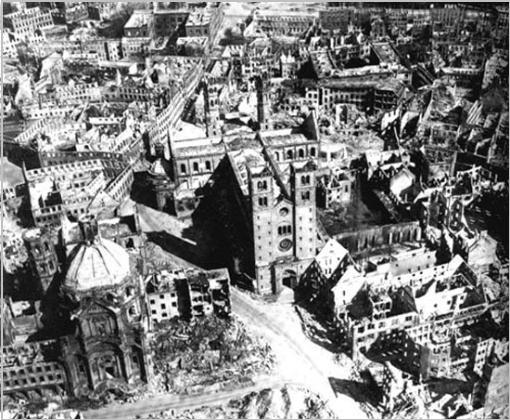

|
| Top: Würzburg 1500s. Middle: Würzburg Castle 1500s. Bottom: Würzburg 1900 |
According to the official statistics between 360,000 to 380,000 incendiary bombs were dropped in three waves, with 180 to 220 high-explosives bombs weighing 500 kg each. Würzburg was an inferno with 1,000 to 2,000 degree Celsius heat by midnight. The intensity of the heat and fire destroyed what bombs could not. People ran from their overheating cellars to the Main river, screaming and praying for help. The death count at the time was about 5,000 civilians.
Over 3,700 of the casualties were women and children, most of them painfully burned to death. Four fifths of the living space was destroyed and 35 churches and almost all public buildings and cultural memorials were absolutely ruined. The city was transformed from a magnificent mecca of culture and art into two and a half million cubic meters of rubble, ashes and burnt flesh. In 1939, Wurzburg had a population of 112,997. By 1950, it was reduced to 86,564. There were no priority factories and no armaments in Wurzburg.
The crews had been told that it was an “important center of communication” yet the vast majority of bombs dropped were incendiaries with diabolical time delays dropped on residential areas.

|
| 1945 |